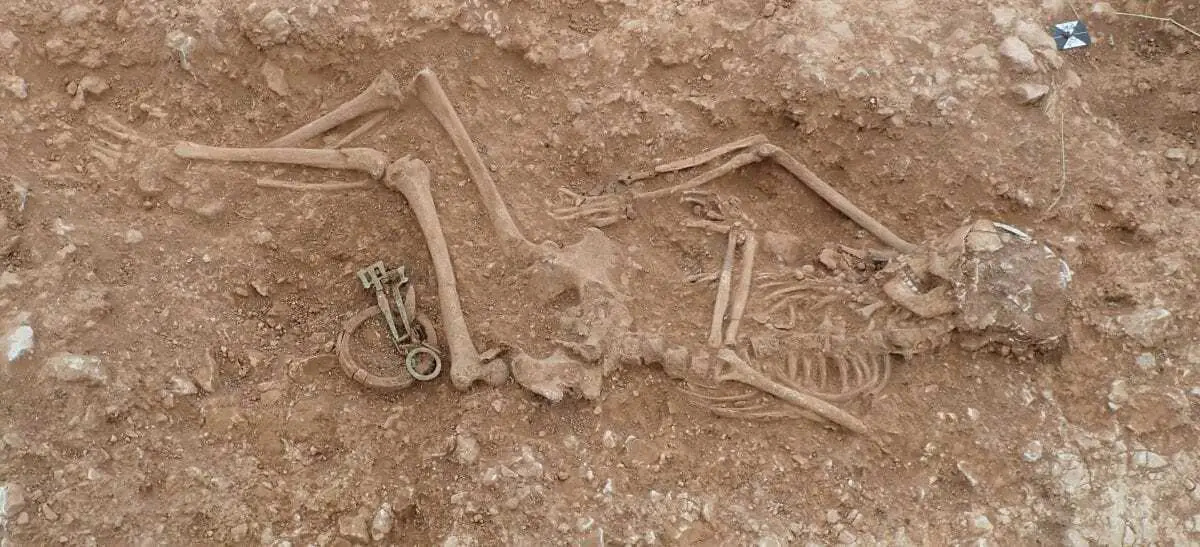Archaeologists from the University of Sheffield have uncovered a previously unknown Anglo-Saxon cemetery.
Excavations have revealed more than 20 burials at the extraordinary cemetery in the Lincolnshire Wolds dating back to the late fifth to mid sixth centuries AD.
The dig at the site in Scremby, Lincolnshire was led by Dr Hugh Willmott and Dr Katie Hemer from the University of Sheffield’s Department of Archaeology in collaboration with Dr Adam Daubney, the Lincolnshire Finds Liaison Officer for the Portable Antiquities Scheme.
The cemetery was first brought to light when a local metal detectorist began to discover a number of Anglo-Saxon artefacts, including copper gilded brooches, iron shield bosses and spear heads.
The finds were typical of those found in early Anglo-Saxon burials therefore it was necessary to excavate the site to ensure any further artefacts were retrieved, recorded and preserved before they could be destroyed by agricultural activity.
International volunteers, students from the University of Sheffield, and members of the RAF from nearby stations took part in the excavation which is the first to have been extensively investigated since the 19th century.
Dr Hugh Willmott, Senior Lecturer in European Historical Archaeology from the University of Sheffield, said: “Almost without exception, the burials were accompanied by a rich array of objects, in keeping with the funerary rites adopted during the early centuries of the Germanic migrations to eastern England.
“What is particularly interesting is the significant proportion of very lavish burials which belonged to women. These women wore necklaces made from sometimes hundreds of amber, glass and rock crystal beads, used personal items such as tweezers, carried fabric bags held open by elephant ivory rings, and wore exquisitely decorated brooches to fasten their clothing.
“Two women even received silver finger rings and a style of silver buckle commonly associated with Jutish communities in Kent. Furnished burials belonging to males were also identified, including a number buried with weaponry such as spears and shields.
Dr Willmott added: “Children were notably absent in the parts of the cemetery excavated this year, however, one of the most striking burials was that of a richly-dressed woman who was buried with a baby cradled in her left arm.
“The preservation of the skeletal remains, as well as the many grave finds, provide an exciting opportunity to explore the social and cultural dynamics of the community who chose to bury their dead on this chalky outcrop.”
In order to understand as much as possible about the site and those buried there, a series of scientific investigations are underway at the University of Sheffield by the Department of Archaeology.
The human remains are undergoing a complete osteological assessment, whilst stable isotope analysis of teeth and bone will identify where the individuals grew up as children and what food resources they ate.
Dr Katie Hemer, Lecturer in Bioarchaeology at the University of Sheffield, said: “Analysis also extends to a number of the finds, including the amber beads, which are being studied in collaboration with colleagues from Sheffield’s Department of Physics; we will analyse the elemental composition of the metalwork and identify the elephant species which produced the ivory rings.
“The project’s multi-faceted investigation which incorporates cutting-edge scientific techniques will enable Sheffield archaeologists to ask and answer significant questions about early Anglo-Saxon communities in eastern England.”
Header Image – Female burial unearthed at Anglo-Saxon cemetery in Lincolnshire – Credit : University of Sheffield







